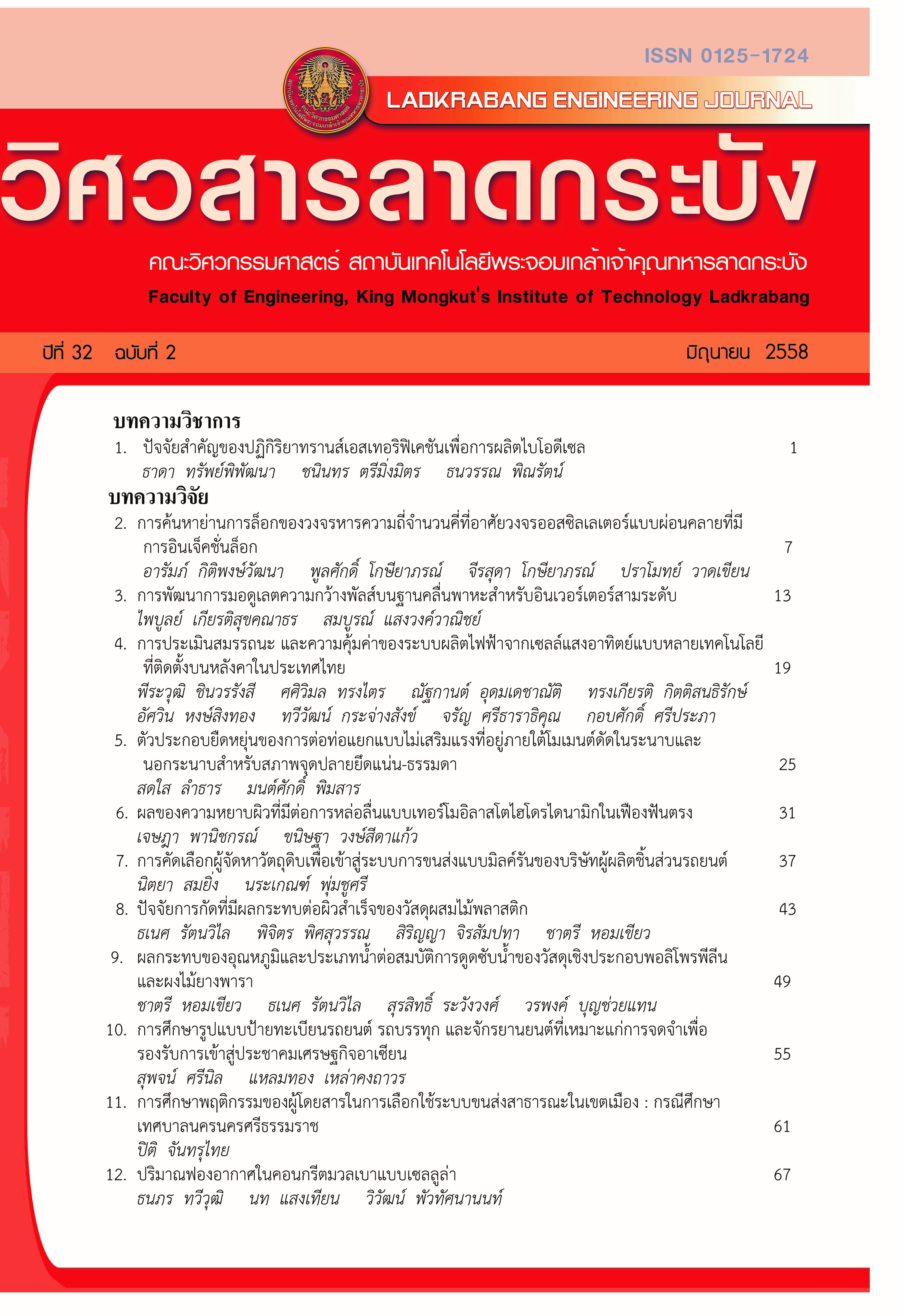Air Content of Cellular Lightweight Concrete
Keywords:
cellular lightweight concrete,, foam concrete,, air content,, porosity,, specific gravityAbstract
This paper presents the determination of air content in cellular lightweight concrete using 3 methods: (1) Air Void Analyser, (2) calculation based on mix proportions and (3) porosity estimation using ASTM C128 for the determination of concrete specific gravity. Cellular lightweight concretes with unit weight between 800 kg/m3 to 1800 kg/m3 using water to cement ratios of 0.45 and 0.55 and sand to cement ratios of 0.25:1, 0.5:1, 1:1, 2:1 and 3:1 in total of 26 designed mixes are produced. The air contents obtained using methods (1), (2) and (3) found in between 13.3 and 53.8 %, from 39.4 to 78.7 % and from 36.7 to 73.1%, respectively. The volume of cement and sand (solid content) found in between 19.8 and 59 percent of concrete volume. From the study, this may be concluded that in practice determination of porosity and concrete specific gravity based on ASTM C128 may be used, and solid content may be used to study the correlation of cellular lightweight concrete properties.
References
[2] N. Narayanan and K. Ramamurthy, “Structure and properties of aerated concrete: a review,” Cement & Concrete Composites, Vol.22, pp.321-329, 2000.
[3] M.S. Shetty, “Concrete Technology: Theory and Practice,” S.CHAND&COMPANY, Ram Nagar, New Delhi, 2000.
[4] M L. Gambhir, “Concrete Technology: Theory and Practice,” 5ed., McGraw Hill Education (India) Private Limited, New Delhi, 2013.
[5] TIS 2601-2556, Cellular Lightweight Concrete Blocks using Preformed Foam,” Thai Industrial Standard Institute, Ministry of Industry, 2556.
[6] E.K.K. Nambiar and K. Ramamurthy, “Models relating mixture composition to the density and strength of foam concrete using response surface methodology,” Cement & Concrete Composites, Vol.28, pp.752–760, 2006.
[7] A. Bouguerra et al., “Effect of Microstructure on the Mechanical and thermal Properties of Lightweight Concrete Prepared from Clay, Cement, and Wood Aggregates,” Cement and Concrete Research, Vol.28, No.8, pp1179-1190, 1998.
[8] E.P.Kearsley and P.J. Wainwright, “Porosity and Permeability of foamed concrete,” Cement and Concrete Research, Vol. 31, pp.805-812, 2001.
[9] E.K.K. Nambiar and K. Ramamurthy, “Air void characterisation of foam concrete,” Cement and Concrete Composites, Vol. 37, pp.221-230, 2007.
[10] N. Narayanan and K. Ramamurthy, “Microstructural investigations on aerated concrete,” Cement and Concrete Research, Vol.30 pp.457-464, 2000.
[11] J. Carlson, “Advancement on the Application of a Flat-Bed Scanner for Hardened Portland Cement Concrete Air Void Analysis,” Thesis, Michigan Tech University, 2005.
[12] R.F.Craig, “Soil Mechanics,” Chapman&Hall, 1996.
[13] ASTM C128-97 Standard Test Method for Specific Gravity and Absorption of Fine Aggregate.
Downloads
Published
How to Cite
Issue
Section
License
The published articles are copyrighted by the School of Engineering, King Mongkut's Institute of Technology Ladkrabang.
The statements contained in each article in this academic journal are the personal opinions of each author and are not related to King Mongkut's Institute of Technology Ladkrabang and other faculty members in the institute.
Responsibility for all elements of each article belongs to each author; If there are any mistakes, each author is solely responsible for his own articles.






